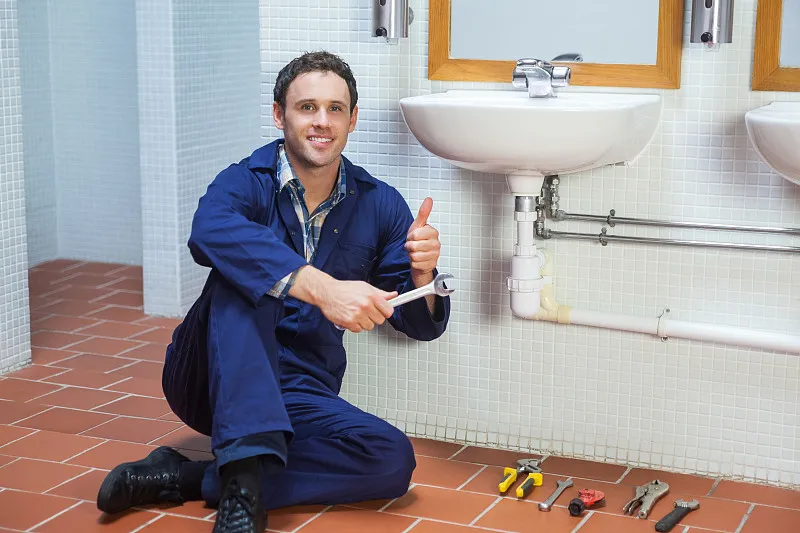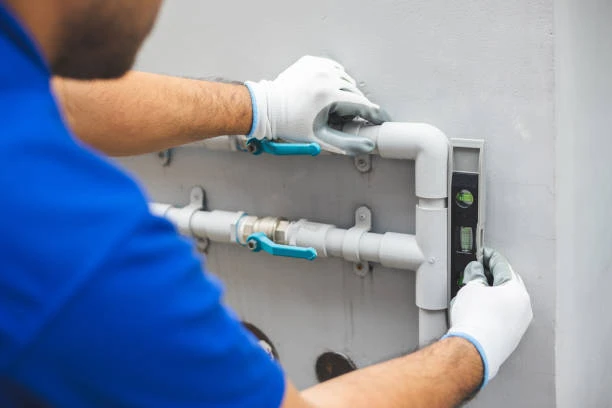Introduce PPR Pipe
PPR Pipe are a popular choice in modern plumbing systems, especially for transporting hot and cold water in residential, commercial, and industrial settings. These pipes, made from Polypropylene Random Copolymer (PPR), offer excellent durability, resistance to corrosion, and high-temperature tolerance, making them ideal for a wide range of applications. One essential component that works in conjunction with PPR pipes to ensure the system operates efficiently is the PPR ball valve.
Ball valves are key elements in controlling the flow of water or any other fluid within a piping system. In the case of PPR pipe systems, PPR ball valves are the most commonly use valve type. These valves are know for their reliable performance, ease of operation, and leak-proof characteristics, making them the preferred choice for most plumbing systems. This article will explore the applications of PPR ball valves in PPR pipe systems, their advantages, and why they are a critical component of modern plumbing installations.
What is a PPR Pipe Ball Valve?
A PPR ball valve is a type of valve that uses a spherical ball with a hole through the middle to control the flow of water or other fluids. The ball rotates within the valve body, allowing or stopping the flow of fluid depending on its orientation. In the fully open position, the hole in the ball aligns with the pipe, allowing the fluid to pass through. When the valve is close, the ball rotates 90 degrees, and the hole is no longer aligned with the pipe, stopping the flow.
PPR ball valves are make from the same material as PPR pipes – Polypropylene Random Copolymer – ensuring compatibility and long-lasting performance when used in conjunction with PPR pipes. These valves are know for their simple design, low maintenance needs, and exceptional reliability.
Advantages of PPR Pipe Ball Valves
- Leak-Proof Performance PPR ball valves are designe to provide leak-proof connections. The ball inside the valve is precisely manufacture, ensuring a tight seal when the valve is close. When installed properly, PPR ball valves ensure that there is no risk of leaks, which is essential in maintaining the integrity of a piping system.
- Durability and Longevity Just like PPR pipes, PPR ball valves are highly durable and have a long service life. They are resistant to chemical degradation, high temperatures, and pressure, which makes them suitable for both residential and industrial applications. These valves can withstand temperatures up to 95°C (203°F) and pressures up to 20 bar, ensuring that they can handle most plumbing needs.
- Ease of Operation PPR ball valves are incredibly easy to operate. The quarter-turn design – rotating the handle 90 degrees to open or close the valve – is simple, efficient, and quick. This ease of use makes these valves ideal for applications where fast and convenient control of the flow is necessary, such as in emergency shut-offs or routine maintenance.
- Cost-Effective PPR ball valves are typically more affordable compare to other types of valves made from materials like brass or stainless steel. Their low cost, coupled with their long lifespan, makes them a cost-effective solution for controlling the flow of water in PPR pipe systems.
- Resistance to Corrosion and Chemicals One of the key advantages of PPR ball valves is their resistance to corrosion. Unlike metal valves, PPR ball valves do not rust, ensuring that they maintain their integrity over time. Additionally, PPR valves are resistant to a wide range of chemicals, making them ideal for use in systems that carry different types of fluids, including potable water and industrial liquids.
Application of PPR Pipe Ball Valves in PPR Pipe Systems
PPR ball valves are versatile and can be used in a wide variety of plumbing applications. Below are some of the common uses of PPR ball valves in PPR pipe systems:
1. Hot and Cold Water Distribution Systems
One of the most common applications of PPR ball valves is in hot and cold water distribution systems. PPR pipes are often use to transport both hot and cold water in residential and commercial buildings. And PPR ball valves are use to control the flow of water within these systems.
In homes and buildings, PPR ball valves are installe at key points in the system. Such as at the entry point for the water supply. Under sinks, and in bathrooms. These valves allow for easy shut-off of water in case of maintenance or repair. Making them crucial for controlling water flow.
2. Underfloor Heating Systems
Underfloor heating systems are increasingly popular in both residential and commercial properties. These systems use hot water circulated through pipes beneath the floor to provide heat. PPR ball valves are often use in underfloor heating installations to regulate the flow of hot water to various sections of the floor.
By using PPR ball valves, homeowners and businesses can control the temperature of different zones in the building by adjusting the water flow in specific areas. This helps improve energy efficiency by ensuring that heating is only use where and when it’s needed.
3. Irrigation Systems
PPR pipes are widely used in agricultural applications, especially for irrigation systems. In irrigation setups, PPR ball valves are used to control the water supply to various parts of the system, ensuring that crops receive the right amount of water.
Whether it’s for drip irrigation or sprinkler systems, PPR ball valves allow farmers and gardeners to turn the water supply on and off as needed, providing greater control over water usage and improving efficiency in irrigation management.

4. Commercial and Industrial Water Systems
PPR ball valves are commonly used in large-scale commercial and industrial water systems. These systems often operate under high pressure and carry large volumes of water, and the need for reliable and efficient flow control is essential.
In commercial buildings, PPR ball valves are used to regulate the flow of water to various sections of the plumbing system, such as bathrooms, kitchens, and cooling systems. In industrial settings, PPR ball valves can control the flow of water in cooling towers, manufacturing processes, and other systems where precise flow control is needed.
5. Solar Water Heating Systems
Solar water heating systems rely on the energy from the sun to heat water, which is then stored and used in various applications. PPR ball valves are used in solar water heating systems to control the flow of water between the solar collector, storage tank, and distribution system.
These valves help maintain the efficiency of the system by allowing for easy control of the water flow and ensuring that water is directe to the right areas when needed.
6. Swimming Pool Water Systems
In swimming pool systems, PPR pipes and ball valves are use to regulate the flow of water through filtration systems. Heating systems, and pool pumps. PPR ball valves are ideal for controlling the flow of water to and from various components of the pool system. Ensuring that the pool remains clean, well-maintained, and safe for use.
7. Food and Beverage Industry
In the food and beverage industry, PPR ball valves are use in systems that transport water for cleaning, cooling. And processing purposes. These industries require valves that can withstand high temperatures and chemicals. And PPR ball valves meet these requirements while ensuring the water supply remains clean and uncontaminated.
Installation of PPR Pipe Ball Valves
Installing PPR ball valves in PPR pipe systems is a relatively straightforward process, particularly when using the heat fusion method. Which is commonly employed for joining PPR pipes and fittings. Below is an outline of the basic installation steps for PPR ball valves:
1. Preparation
- Measure and cut the PPR pipe to the required length using a pipe cutter or saw.
- Ensure that the ends of the pipe are clean and smooth to ensure a secure fusion weld.
- Clean the PPR ball valve fittings to remove any dirt or debris.
2. Fusion Welding
- Use a fusion welding machine to heat the ends of both the PPR pipe and the PPR ball valve fitting.
- Once heated, press the pipe and fitting together to create a leak-proof bond.
- Hold the connection for a few seconds to allow the fusion to solidify.
3. Pressure Testing
- After installation, conduct a pressure test to ensure the valve and pipes are functioning properly and that there are no leaks in the system.
Conclusion PPR Pipe
PPR ball valves play a crucial role in maintaining the efficiency and functionality of PPR pipe systems. Their reliability, ease of operation, and resistance to corrosion make them an ideal choice for both residential and commercial plumbing systems. Whether used in hot and cold water distribution systems, underfloor heating, irrigation systems, or industrial applications. PPR ball valves provide precise control over fluid flow, ensuring long-term performance and cost-effectiveness.
By understanding the applications and advantages of PPR ball valves, you can ensure that your PPR pipe system remains efficient and reliable for many years to come.
Frequently Asked Questions (FAQ)
- What is a PPR Pipe ball valve? A PPR ball valve is a type of valve use to control the flow of water or other fluids in a PPR pipe system. It features a spherical ball with a hole that rotates 90 degrees to either allow or block the flow of fluid.
- How do you install a PPR Pipe ball valve? PPR ball valves are installe by using the heat fusion method. Where the ends of the PPR pipe and the valve fitting are heate and then pressed together to form a leak-proof bond.
- Can PPR Pipe ball valves be use for both hot and cold water? Yes, PPR ball valves are suitable for both hot and cold water applications. As they are designe to withstand temperatures up to 95°C (203°F).
- What are the main advantages of using PPR Pipe ball valves? The main advantages include leak-proof performance. Durability, resistance to corrosion, ease of operation, and cost-effectiveness.
- Where are PPR Pipe ball valves commonly use? PPR ball valves are commonly use in hot and cold water distribution systems. Underfloor heating systems, irrigation systems. Commercial and industrial water systems, solar water heating systems, swimming pools, and food and beverage industries.


















